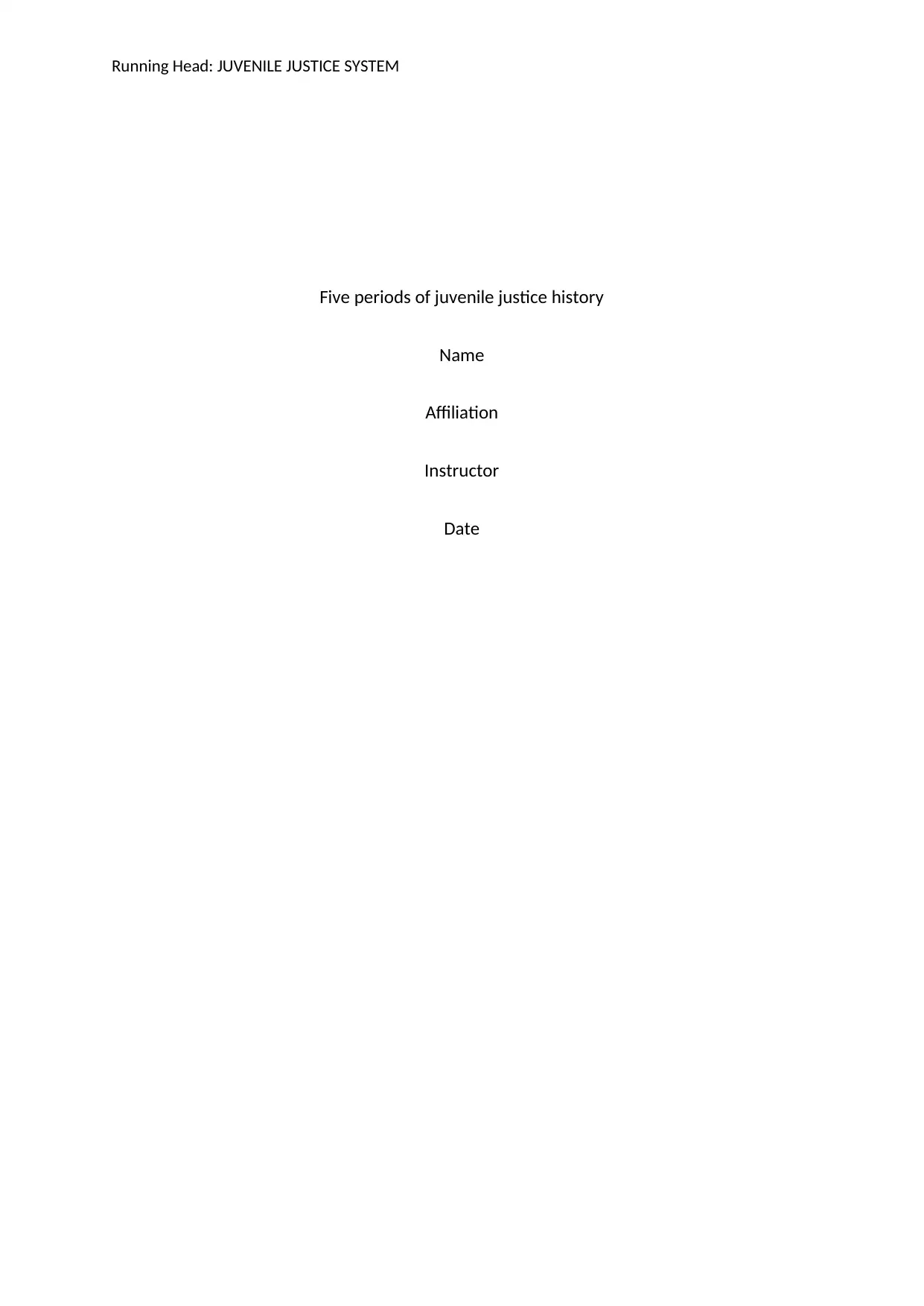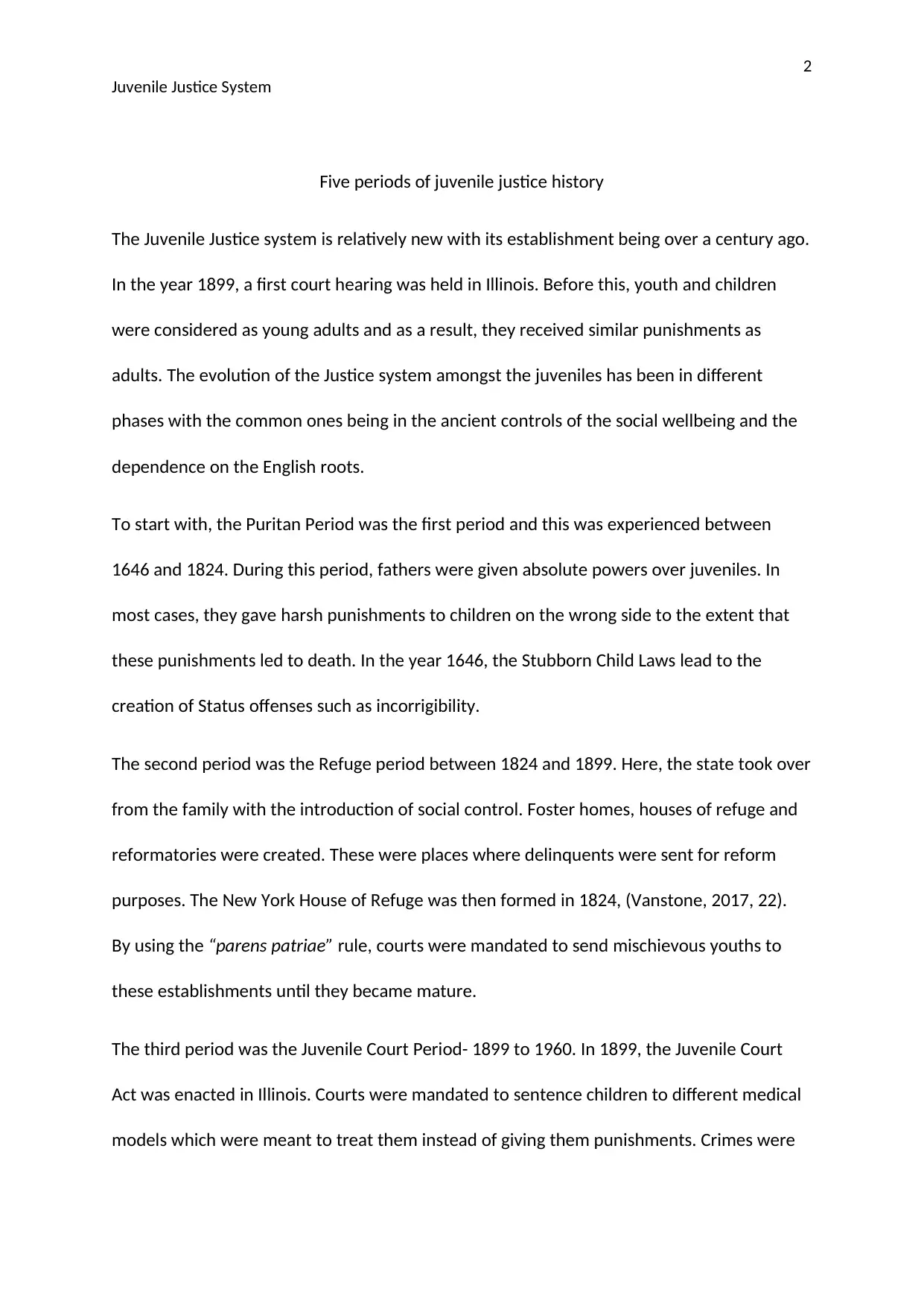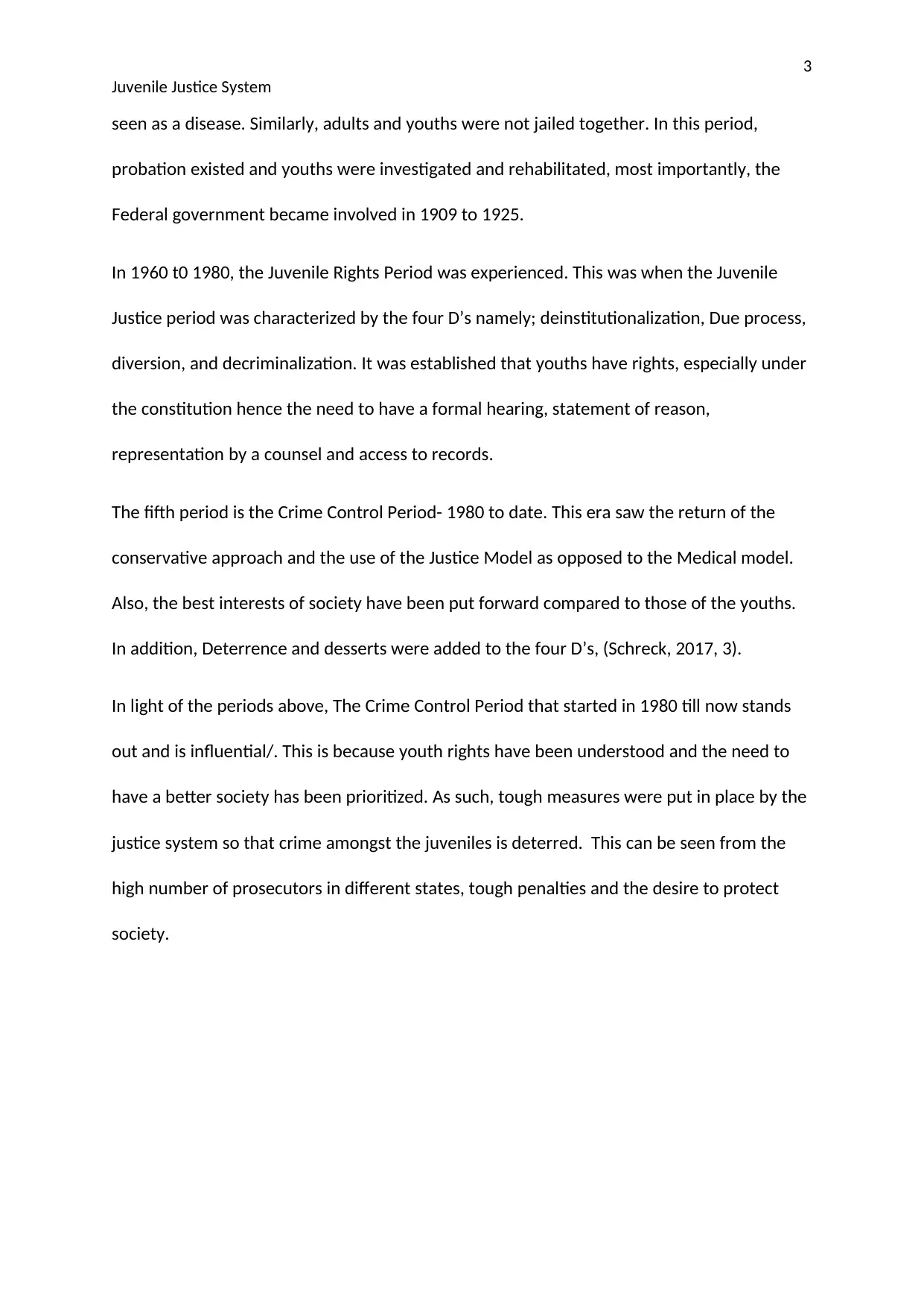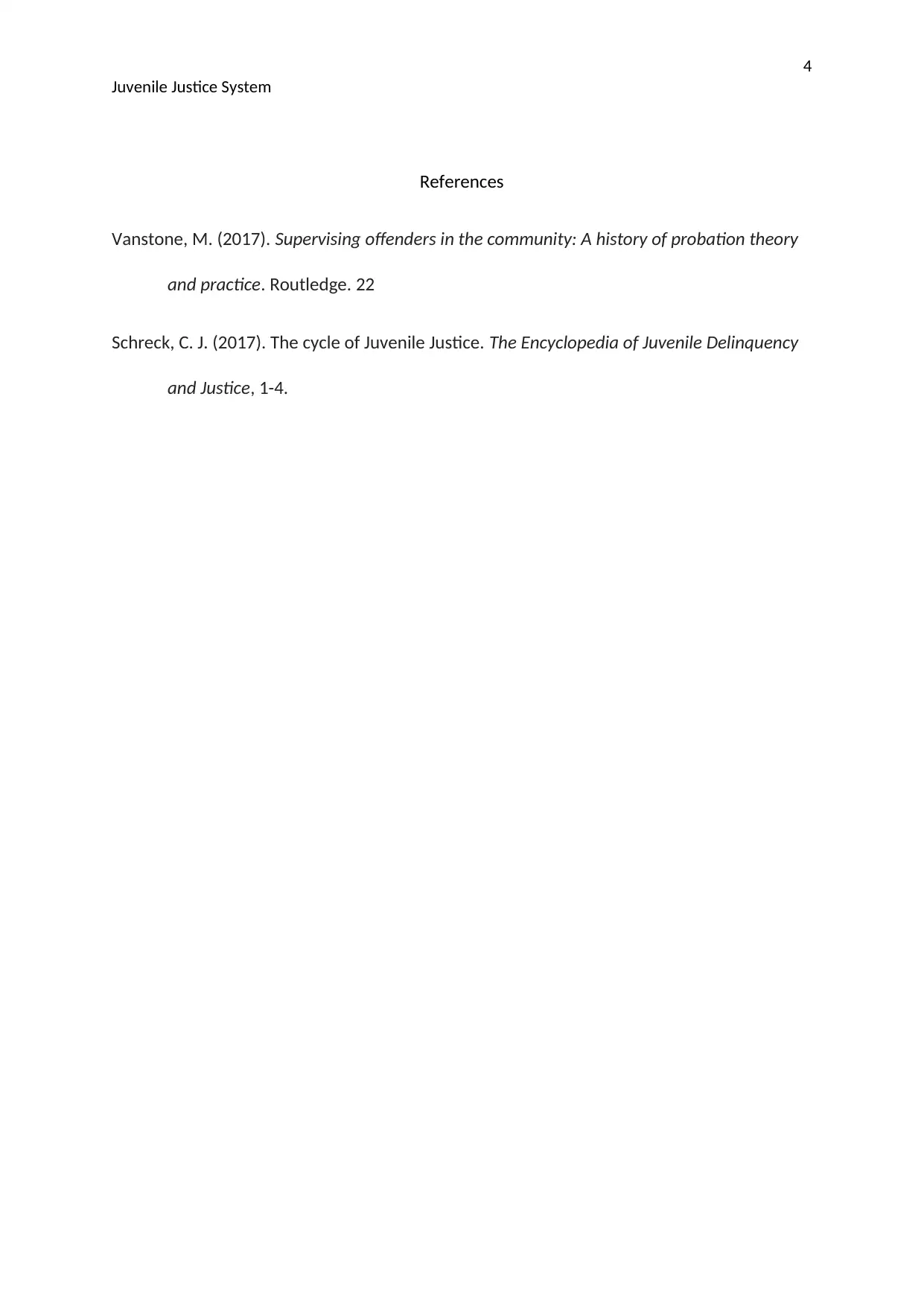Examining Key Trends in Five Periods of Juvenile Justice History
VerifiedAdded on 2023/04/23
|4
|668
|180
Essay
AI Summary
This essay explores the five distinct historical periods of the juvenile justice system. It begins with the Puritan Period (1646-1824), characterized by strict parental control and harsh punishments. The essay then discusses the Refuge Period (1824-1899), when the state intervened, establishing reformatories and houses of refuge. Next, it examines the Juvenile Court Period (1899-1960), marked by the creation of juvenile courts and a focus on rehabilitation. The Juvenile Rights Period (1960-1980) is then analyzed, highlighting the emphasis on due process and the rights of juveniles. Finally, the essay delves into the Crime Control Period (1980-present), which emphasizes deterrence and accountability. The essay concludes by arguing that the Crime Control Period is particularly influential due to its focus on both protecting society and understanding juvenile rights. Desklib offers a wealth of resources, including past papers and solved assignments, to aid students in their studies.
1 out of 4











![[object Object]](/_next/static/media/star-bottom.7253800d.svg)